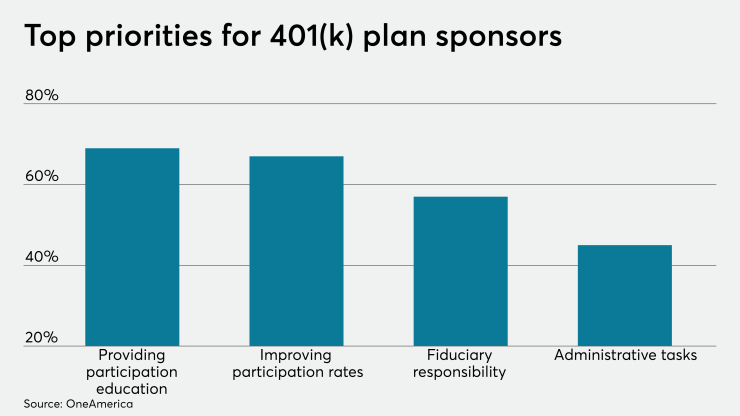The last few weeks have been an incredible roller-coaster ride for the retirement industry and plan participants. That bumpy ride could hit some people much harder than others if they aren’t aware of, or paying attention to, the mix of investments in their portfolio.
There have been plenty of changes over the last few years for retirement plan advisers, plan sponsors, fund companies, record-keepers and participants. But most pale in comparison to the massive, industry-changing trend of using target date funds as the QDIA. The amount of money rolling to target date funds rather than other core funds options is astounding. But, there are signs of trouble everywhere that the retirement community is missing entirely.
Some estimates suggest more than 80% of new plan deferrals go to TDF portfolios. Studies have shown that as many as 84% of participants don't understand target date funds, and an even more astounding 64% believe their target date funds have some level of guarantee.
Millennials have polled as the second most risk-averse generation of investors, behind only the Depression babies. Yet many millennials have been defaulted to target date funds, with many of them north of 90% in stock allocations.
So, many participants largely own investments that they don't understand and more often than not hold much more in equities than they would knowingly choose on their own.
Why has this not been a problem yet? The last 10-year period, which happened to be the same time period that TDFs became so popular, saw 360% growth in the S&P 500. It was also one of the least volatile 10-year periods in the history of the market.
When you then factor in investor behavior, the massive risks at play begin to come into full picture. Over the past 20 years (as of September 2019) participants have averaged 1.9% return while the S&P 500 averaged 5.6%. Over the working lifetime of a participant (estimated at 35 years) the difference in a $100,000 total investment would be $175,000 at 1.9% to $512,000 at 5.6%.
Why the big difference? Many participants exited the marketplace in 2007 and 2008 and didn't return for too long, as mutual fund flows remained negative until January 2010, after the markets had already recovered more than 70% of their losses.
So what should advisers do? Progressive advisers and plan sponsors will objectively realize that now is the time to act. The last few weeks have proven the next 10 years’ returns likely won’t be another 350-plus percent with little if any volatility. Progressive thought leaders will be honest and acknowledge that participants, many of whom are unknowingly in heavy equity allocations, will jump out as we hit more realistic volatility cycles, and many will get back in when it is too late, or may never get back in.
So what strategies might you consider?
A complete re-enrollment into a balanced fund QDIA. Without knowing the participant’s risk tolerance, a shift to a more middle-of-the-road allocation is beyond logical. Those who understand their TDF portfolios have every right to jump right back into them. So candidly, you are taking nothing away.
A re-enrollment paired with a required risk profile. Those who don't comply are defaulted to a balanced fund or something more conservative.
At the very least, a re-enrollment to a TDF manager who excels in volatile times and understands sequence of returns. We have chosen American Century for this specific reason, as they have historically been one of the top managers in every down cycle.






